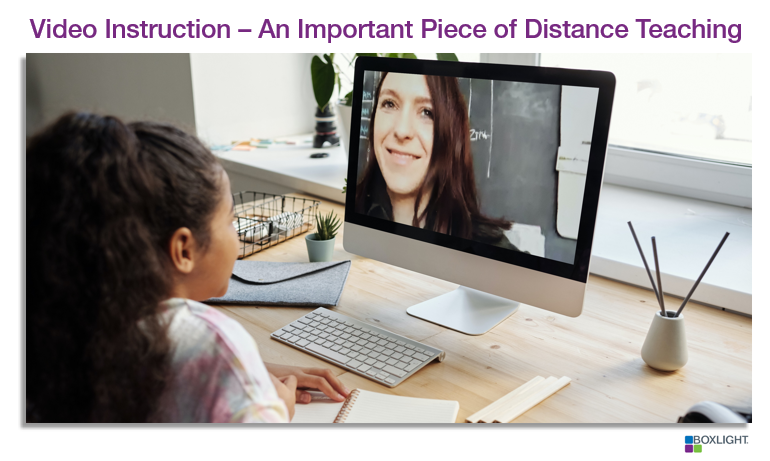 How many of you have watched videos featuring a popular chef whipping up a dessert, or a lost puppy being rescued? I know I’m not alone in saying that watching these types of compelling, engaging, and short videos has led to experimenting in the kitchen, sewing a simple face mask, learning a new dance move, and playing with the idea of adopting a new pet. Videos have made an impact on how we learn things for daily living and are essential for our young ones who tend to be more engaged and focused on short lessons via this medium. Why have more and more educators turned to video?
How many of you have watched videos featuring a popular chef whipping up a dessert, or a lost puppy being rescued? I know I’m not alone in saying that watching these types of compelling, engaging, and short videos has led to experimenting in the kitchen, sewing a simple face mask, learning a new dance move, and playing with the idea of adopting a new pet. Videos have made an impact on how we learn things for daily living and are essential for our young ones who tend to be more engaged and focused on short lessons via this medium. Why have more and more educators turned to video?
Video --
- sparks interest and compels viewers to anticipate learning something new.
- keeps viewer attention for extended blocks of time.
- immerses the viewer in an experience outside of the traditional classroom setting.
- communicates ideas that can be paused, reviewed, and replayed.
- can be reviewed often to deepen understanding of a new skill or concept.
- has a variety of uses including for presentations, training, and tutorials.
Besides using video from outside sources, which don’t always meet specific instructional needs, educators are learning to create their own videos to teach new concepts and skills. This is especially beneficial with blended learning and distance teaching.
Each teacher knows their own students and there will be times that the best way to reach them is through personalized instructional videos. Teachers record themselves teaching the concept or skill, working through processes and steps that they know their students will understand. After all, most classes have a working relationship that involve different personalities that have learned to collaborate and interact.
One way to record instruction is through screencasting, recording everything that happens on a screen including audio, images, objects, and mouse movements. For example, Khan Academy uses screencasting for their short and simple instructional videos. Many companies have created annotation-capable tools meant for interactive boards, such as MimioStudio classroom software, that includes screen recording features.
Of course, there is always room for creativity in providing personalized instructional videos, especially for younger learners who thrive on easy-to-follow, short videos. Depending on the class, images and background music can also make or break a student’s total engagement in the video. Teachers can now have more control of the content, visual cues, audio, and pacing of instruction with video creation software such as MimioMoovly.
With either screen recording or video creation, the focus is student learning and understanding. Currently, distance learning and teaching may be seen more as a necessity because of stay-at-home directives in most areas. But, providing instruction from afar, such as with blended learning environments or flipped learning strategies, may become commonplace. Videos will have a much greater part in instructional planning in the future. Why not start now?

